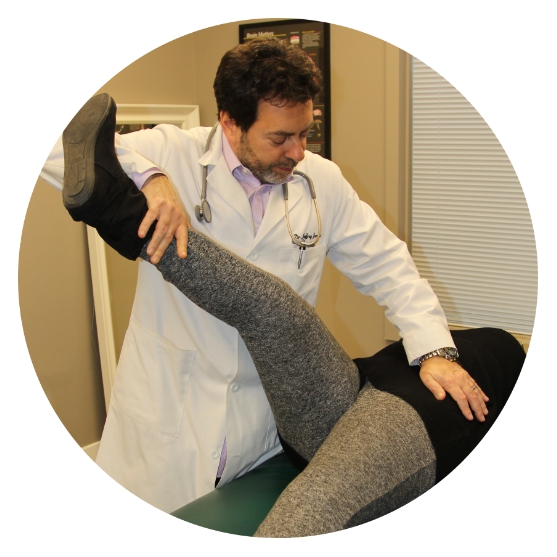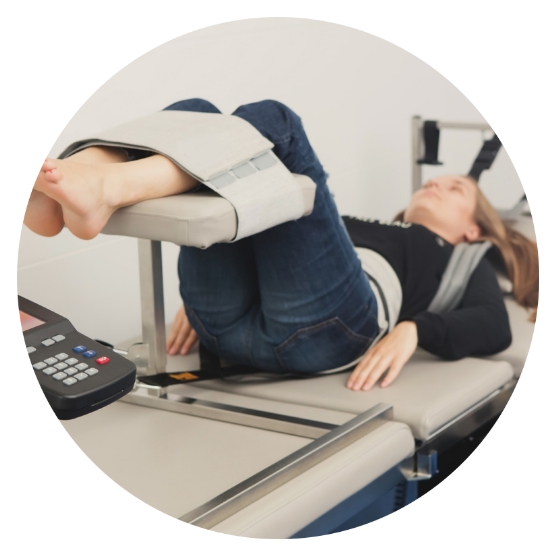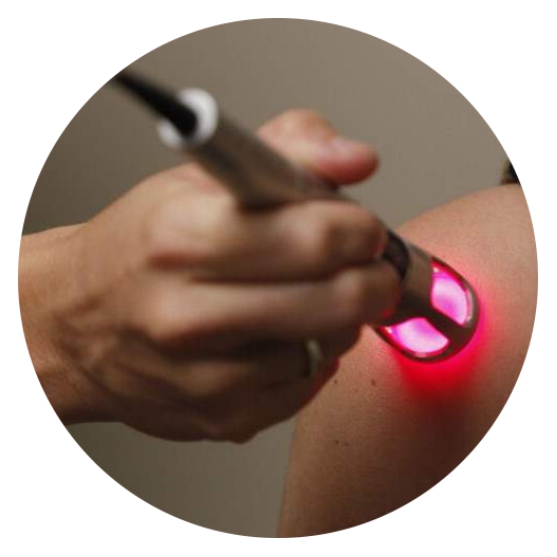Herniated Disc
The Basic Anatomy
Your intervertebral disc is the structure that sits between the vertebrae in your spine to absorb the shock of your body in gravity and to resist gravity, and to give flexibility to your spine. You have discs from C2 all the way down to your sacrum, the triangular bone that sits at the bottom of your spine and connects to your two ilium bones. The disc can be thought of as a jelly donut. It has a soft gel like center that is contained by a tough outer band of ligaments called the annulus fibrosis that run at cross angles to one another. The center of the disc is called the nucleus pulposis. The nucleus pulposis is made up of this crazy thing called proteoaminoglycosaminoglycans—it’s ok if you can’t pronounce it! Basically it’s a gel like structure that helps the vertebrae rotate and pivot and distribute weight and forces applied to it. The term cervical herniated disc, thoracic herniated disc, or lumbar herniated disc all refer to the same problem simply differentiated by region in the spine. Cervical refers to neck, thoracic herniated disc refers to the middle of your back where your ribs attach, and lumbar herniated disc refers to your low back.
When a disc “herniates”, it means that the gel like substance in the center of the disc has pushed the outer layer of the disc (the annulus fibrosus) out, or it has pushed through the annulus, which is generally called a ruptured disc. Imagine if you were to press your hand down on a jelly donut until the jelly began to push out the side. This is what it looks like.
Ruptured discs
can be attributed to a protrusion, extrusion, or sequestration. In a ruptured disc, the nucleus has fully ruptured through the annulus fibrosus. It is no longer contained or restricted by the outer layer of the disc.
Causes
Disc herniations can be caused by anything that could damage the spine and discs, such as:
a slip and fall
an auto accident
or any other trauma.
A disc herniation can also be caused by:
a sedentary lifestyle and
lack of movement
…which leads to the disc drying out and weakening.
This can leave you vulnerable to something benign. Once a disc is weakened, all it may take is that you make a move that you have a hundred times before,
like reaching into the back seat of your car to grab something and are gripped by paralyzing pain,
or you bend over to pick up a pencil, and experience excruciating pain.
Symptoms
Symptoms of disc herniations can range from no pain to severe pain. The pain may also radiate into your extremities, or up and down your back.
However, the pain you can experience is often related to the type of herniation that you have. You can have:
back pain
neck pain
sciatica
pain in one or both legs
pain in one or both arms
shooting pain
dull, aching pain
numbness
tingling
and/or weakness
If you have a disc herniation in your neck, then you might experience pain in your arms or upper back. If you have a herniation in your lower back, then you might experience pain or numbness and tingling in your back and into your legs.
TREATMENTS
We have had massive success treating herniated discs using a very sophisticated technology known as Non-Surgical Spinal Decompression. Non-surgical spinal decompression is able to to reduce the compressive force on the disc, allowing us to decrease the disc herniation’s size, rehydrate the disc, and restore normal function. This can then remove the pressure on pinched nerves caused by the disc herniation, reducing and eliminating the pain caused by them.
In addition, we do many other therapies designed to improve strength and mobility to your spine, hips, and neck to reduce the likelihood of re-injury. However, in some cases, if we are unable to help a patient with a large disc herniation, surgery may be required. Non-invasive, non-surgical decompression should always be tried before surgery, after a proper neurological examination has been performed to determine if you are a good candidate for this procedure. Call us to schedule an appointment to see if we can help you.



